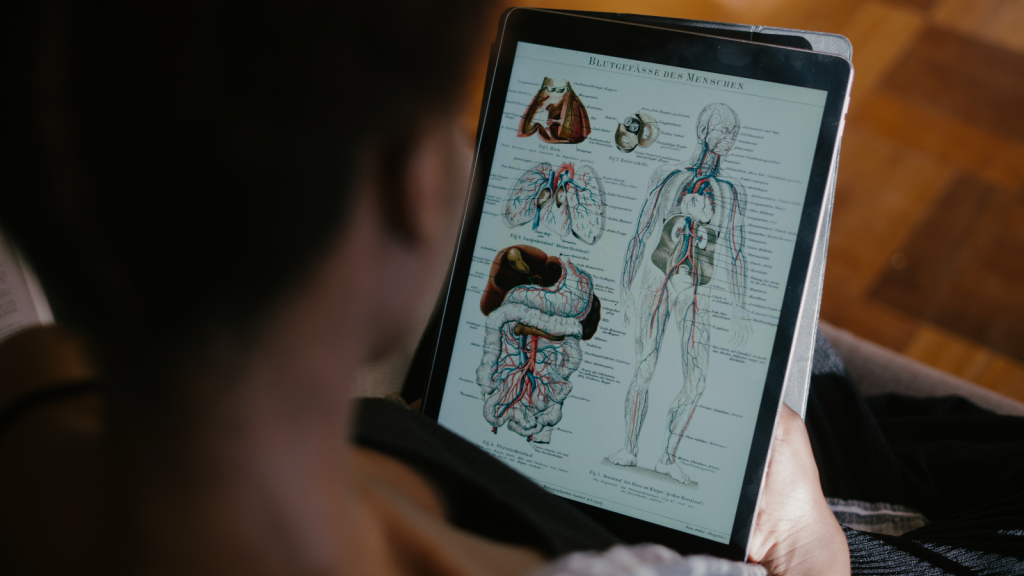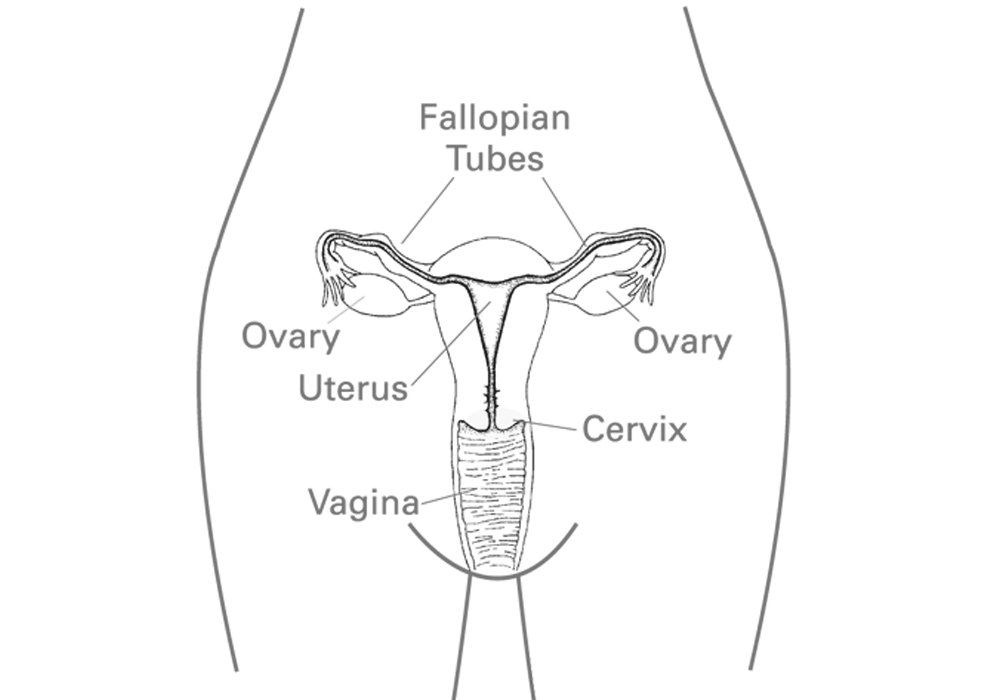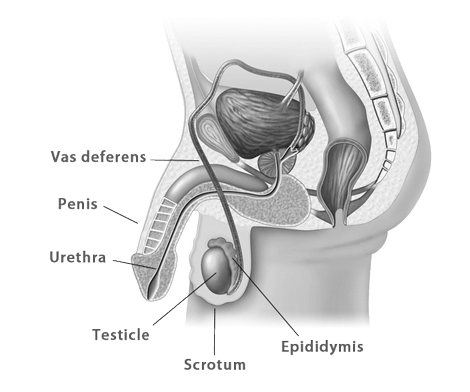
Celebrate the Start of #safesexysummer in June
It’s time to celebrate the start of summer! June is filled with national observances to help you start the summer off right. We’re here to help make June the start of a #safesexysummer.

Sexual anatomy typically refers to the both the external sexual organs, like the vulva and penis, and the internal organs involved in reproduction, like the uterus and seminal vesicle. We categorize this anatomy as either female or male, but not necessarily the person. A person’s anatomy doesn’t determine their gender.
Based on sexual anatomy, a person is typically assigned a sex at birth—female or male. Sometimes a person’s sexual anatomy isn’t characteristically male or female, though—what is called intersex. Intersex is an umbrella term for differences in sex traits or reproductive anatomy. Intersex people are born with these differences or develop them in childhood. There are many possible differences in genitalia, hormones, internal anatomy, or chromosomes. People who are intersex have reproductive traits or sexual anatomy that does not conform to the sex binary of male or female.
Gender is shaped by social and cultural norms and expectations of behavior. A person’s gender identity—their own personal perception of themselves—as female, male, both, or neither—does not necessarily match their biological sex. A person expresses their gender in various ways, such as their name, pronouns, dress, hairstyle, and more. Some gender terms that are important to know include:
- Cisgender refers to a person whose gender identity matches the sex they were assigned at birth.
- Transgender refers to a person whose gender identity does not match the sex they were assigned at birth. For example, a person who was assigned female at birth but identifies as male may be called a transman.
- Nonbinary refers to a person who may identify as male and female, neither, or somewhere between. Some, but not all, nonbinary people consider themselves transgender because they don’t identify with the sex they were assigned at birth.
When we talk about sexual anatomy here, we talk about it in a binary way—male and female. But we are talking about biological sex, not gender identity or expression. So let’s learn about this part of the body and how it works.
The female reproductive system includes the ovaries, the uterus, fallopian tubes, the cervix, and the vagina. Click on the buttons below to learn more about each.

These are narrow tubes that are attached to the upper part of the uterus and serve as tunnels for the ova (egg cells) to travel from the ovaries to the uterus.
The ovaries are small, oval-shaped glands that are located on either side of the uterus (womb). The ovaries produce eggs and hormones. Hormonal methods of birth control manipulate the hormones that cause ovulation and stop it from occurring (in most cases).
The uterus is a hollow, pear-shaped organ. The uterus is divided into two parts: the cervix, which is the lower part that opens into the vagina, and the main body of the uterus, called the corpus.
The cervix is the lower part of the uterus. The small whole in the center of the cervix, called the os, serves a passageway into the uterus.
The vagina is a canal that joins the cervix (the lower part of uterus) to the outside of the body.
Starting at puberty, the ovaries begin to release eggs regularly. The eggs travel from the fallopian tubes into the uterus and eventually are flushed out of the body, along with uterine lining, through the vagina. This process is called the menstrual cycle. A regular cycle averages about 28 days, but it can range from 21-45 days.
If an egg is fertilized by sperm in a fallopian tube, that fertilized egg will typically travel to the uterus. Once there, that egg may or may not implant in the walls of the uterus and continue to grow—resulting in pregnancy. Sometimes, the fertilized egg doesn’t implant and is flushed out during menstruation (a.k.a period).
Sometimes, the fertilized egg implants in the fallopian tube. This is called an ectopic pregnancy and requires treatment immediately. The fertilized egg can’t survive here and if continued to grow, it can cause the tube to rupture and cause life-threatening bleeding.
Now let’s take a look at the external sexual anatomy:

The mons pubis is the rounded fatty mass over the pubic bone covered with hair and coarse skin. It acts as a buffer during sexual intercourse, preventing injury to the underlying bone. It also contains sebaceous and sweat glands. Some of the latter form a specialized type of gland called the apocrine glands. These glands release a secretion with a characteristic smell that increases sexual attraction.
Literally translated as “large lips,” the labia majora are relatively large and fleshy, and are comparable to the scrotum in males. Their job is to enclose and protect the other external reproductive organs. They contain sweat and oil-secreting glands.
The labia minora (“small lips”) are flaps of soft skin that lie within the labia majora, creating another layer of protection for the reproductive organs.
The two labia minora meet at the clitoris, a small, sensitive protrusion that is comparable to the penis. The clitoris is covered by a fold of skin, called the prepuce or clitoral hood, which is similar to the foreskin at the end of the penis. Like the penis, the clitoris is very sensitive to stimulation and can become erect.
These two bean-shaped glands are located on either side of the vaginal opening and produce a (mucus) secretion that acts as a lubricating fluid.
Between the clitoris and the vaginal opening is the opening of the urethra, the tube that connects to the bladder. Urine leaves the body from the urethra.
The above drawing is just a basic idea of the external female genitalia—it is an example, not the standard. In fact, there is no standard. The appearance of genitals vary a great deal from person to person. Labia minora may be longer than the outer labia. The color of labia may change as you age. Clitorises vary in size, shape, and location. Your vulva is beautiful and uniquely yours.
If you’d like to get an idea of just how much all of this varies, you can take a look at The Labia Gallery from Women’s Health Victoria. The models in the gallery reflect a wide range of ages and genders and show just how diverse external genitalia really is. You can also check out vulva portraits and personal stories at The Vulva Gallery, a project of Amsterdam-based illustrator Hilde Atalanta. This collection of vulva portraits showcases a wide variety of vulvas alongside personal stories celebrating body diversity.
We’re all different, so there is no “normal” when it comes to genital appearance. The same goes for male genital anatomy. Let’s take a look:

The penis is the most visible part of the male sexual anatomy. It is made up of two parts, the shaft and the glans (also called the head). The shaft houses the corpora cavernosa (two flexible cylinders comprised of erectile tissue that run the length of the penis and support erections), and the corpus spongiosum (erectile tissue surrounding the urethra). During orgasm, a thick fluid (semen) is released through the urethral opening at the tip of the penis. Urine also leaves the body through the urethral opening.
The urethra is a tube that transports fluids from the inside of the body to the outside. As in female anatomy, the urethra is connected to the bladder and is used to pass urine out of the body. In males, the urethra is also connected to glands that produce semen and to the vas deferens, the duct that brings the sperm from the epididymis.
The testicles are located below the penis and begin producing sperm and testosterone (the male sex hormone) after puberty. The scrotum is a sac of skin that surrounds and contains the testicles.
The epididymis stores the sperm that the testicles produce.
The vas deferens is a duct that carries sperm from the epididymis to the urethra.
As for the penis, much of the concern revolves around size. Penis size is determined entirely by factors out of our control. But questions about size abound; What’s the average penis size? Can I increase my penis size? Does it matter as much as I think it does?
The answer to the last one is easy—no, it doesn’t. A review of various studies showed that the average size for a flaccid (non-erect) penis is 3.61 inches, and 5.16 inches for an erect penis. But average does not mean normal. Just as with vulvas, there is no one normal. Instead there is just beauty in diversity. You can see some of this in the work of photographer Laura Dodsworth, who shares portraits of 100 men in her book Manhood: The Bare Reality. Both cisgender and transgender men share their stories—and photos of their penises—in another celebration of genital diversity.
It’s important to know how your body works, and be able to recognize when something isn’t quite right. If something changes or doesn’t seem quite right, get checked by a health care provider. But also know that there are recommendations for regular sexual health care.

It’s time to celebrate the start of summer! June is filled with national observances to help you start the summer off right. We’re here to help make June the start of a #safesexysummer.

Many people who take doxy PEP say it gives them peace of mind in their relationships and sex life. We sat down with Oscar Alexis, Efthimios, and Maxfield Haynes to talk about doxy PEP and get their perspective.

You can get a UTI from sex, but it’s not what you think. Urinary tract infections (UTIs) are not sexually transmitted infections (STIs). They’re not considered contagious. And yet, they can be a result of sex.

Today there are a lot of experts offering sexual health information and advice on websites and social media, but in the 1980s it seemed like everyone was listening to just one: Dr. Ruth Westheimer.

A new paper suggests that there are biological and evolutionary reasons that we masturbate and looks to our ape ancestors for evidence. There is evidence starting around 40 million years ago that the ancestors of all monkeys and apes did indeed masturbate.

Mpox is an infection caused by a virus. The mpox virus can be spread through close skin-to-skin contact with a person who is infected. Given that, mpox can be passed on by intimate sexual contact.
ASHA believes that all people have the right to the information and services that will help them to have optimum sexual health. We envision a time when stigma is no longer associated with sexual health and our nation is united in its belief that sexuality is a normal, healthy, and positive aspect of human life.
ABOUT
GET INVOLVED
ASHA WEBSITES
GET HELP
© 2025 American Sexual Health Association